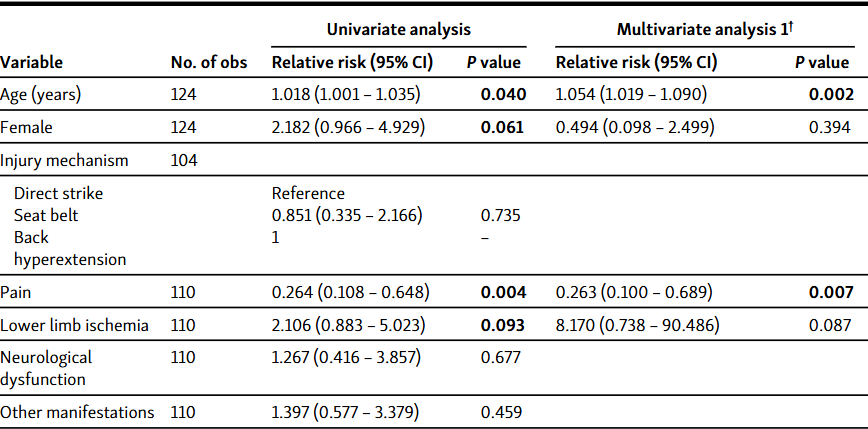A systematic review of blunt abdominal aortic injury and analysis of predictors of death
DOI:
https://doi.org/10.17305/bb.2023.9831Keywords:
Blunt abdominal aortic injury (BAAI), blunt trauma, abdominal injury, mortality, traumaAbstract
At present, research on blunt abdominal aortic injury (BAAI) is limited, with the majority being case reports. Consequently, there is a significant knowledge gap concerning this condition. To address this, we conducted a systematic review by extensively searching major databases. We included all literature that provided individual (non-identifiable) data on BAAI patients, irrespective of the study design. Furthermore, we undertook regression analyses to identify predictors of death after BAAI. The search yielded 2,099 results, leading to the inclusion of 102 case reports and one conference abstract. Using the Joanna Briggs Institute (JBI) checklist for assessment, all studies were deemed of medium to high quality. In total, 133 patients were included, with a median age of 34 years, and 73.7% being male. The predominant clinical manifestation was pain, reported in 65.6% of patients. The most frequently observed aortic lesion severity was grade A (intimal tear or intramural hematoma) at 46.9%, and the most common lesion location was zone III (infrarenal aorta) in 88.3% of cases. The overall mortality after BAAI was 15.3%. Multivariate regression analyses revealed the following predictors of death after BAAI: lower limb ischemia (relative risk [RR] = 7.137, 95% confidence interval [CI] 1.154 - 44.161), cardiopulmonary arrest (RR = 10.250, 95% CI 1.452 - 72.344), and injuries to body parts other than the abdomen and lumbar spine (RR = 2.593, 95% CI 1.189 - 5.655). In conclusion, this review provides a detailed quantitative summary of BAAI's clinical manifestations, diagnosis, treatment, and prognosis, emphasizing its high mortality rate and identifying three critical variables as predictors of death.
Citations
Downloads

Downloads
Published
Issue
Section
Categories
License
Copyright (c) 2023 Mingxuan Li, Chaonan Wang, Haixia Tu, Haitao Zhu, Zhen Guo, Lianrui Guo

This work is licensed under a Creative Commons Attribution 4.0 International License.
How to Cite
Accepted 2023-10-15
Published 2024-05-02









